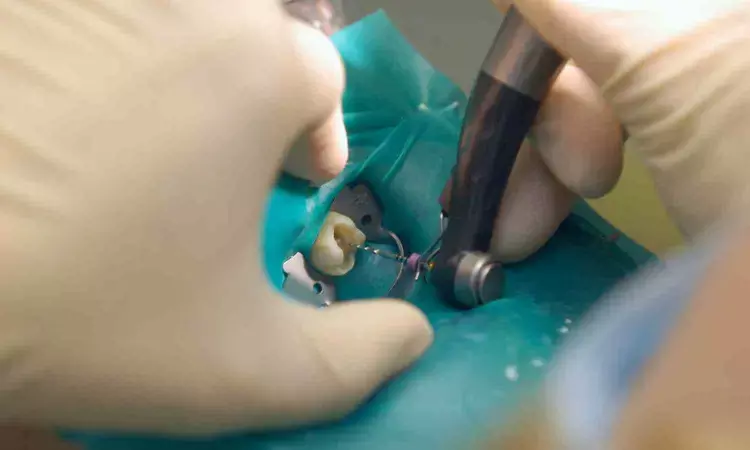- Home
- Medical news & Guidelines
- Anesthesiology
- Cardiology and CTVS
- Critical Care
- Dentistry
- Dermatology
- Diabetes and Endocrinology
- ENT
- Gastroenterology
- Medicine
- Nephrology
- Neurology
- Obstretics-Gynaecology
- Oncology
- Ophthalmology
- Orthopaedics
- Pediatrics-Neonatology
- Psychiatry
- Pulmonology
- Radiology
- Surgery
- Urology
- Laboratory Medicine
- Diet
- Nursing
- Paramedical
- Physiotherapy
- Health news
- Fact Check
- Bone Health Fact Check
- Brain Health Fact Check
- Cancer Related Fact Check
- Child Care Fact Check
- Dental and oral health fact check
- Diabetes and metabolic health fact check
- Diet and Nutrition Fact Check
- Eye and ENT Care Fact Check
- Fitness fact check
- Gut health fact check
- Heart health fact check
- Kidney health fact check
- Medical education fact check
- Men's health fact check
- Respiratory fact check
- Skin and hair care fact check
- Vaccine and Immunization fact check
- Women's health fact check
- AYUSH
- State News
- Andaman and Nicobar Islands
- Andhra Pradesh
- Arunachal Pradesh
- Assam
- Bihar
- Chandigarh
- Chattisgarh
- Dadra and Nagar Haveli
- Daman and Diu
- Delhi
- Goa
- Gujarat
- Haryana
- Himachal Pradesh
- Jammu & Kashmir
- Jharkhand
- Karnataka
- Kerala
- Ladakh
- Lakshadweep
- Madhya Pradesh
- Maharashtra
- Manipur
- Meghalaya
- Mizoram
- Nagaland
- Odisha
- Puducherry
- Punjab
- Rajasthan
- Sikkim
- Tamil Nadu
- Telangana
- Tripura
- Uttar Pradesh
- Uttrakhand
- West Bengal
- Medical Education
- Industry
Use of higher concentration of NaOCl during endodontic treatment can increase postoperative pain significantly, reveals a study

Use of higher concentration of NaOCl during endodontic treatment can increase postoperative pain significantly, reveals a study published in The Journal of the American Dental Association.
This study aimed to evaluate whether using 8.25% sodium hypochlorite (NaOCl), compared with using 2.5% NaOCl, leads to higher postoperative pain after endodontic treatment. A total of 154 patients were randomly assigned into 2 groups: 8.25% and 2.5% NaOCl. A single-visit endodontic treatment was performed using a standard protocol, varying only the NaOCl concentration. Postoperative pain was assessed using the numeric rating scale multiple times over 30 days. Overall pain scores over time were explored via multilevel mixed-effects negative binomial regression. The need for pain medication was recorded and compared between groups via the Mann-Whitney U test. Results: Using 8.25% NaOCl increased postoperative pain scores over time by 3.48 times compared with using 2.5% NaOCl (incident rate ratio [IRR], 3.48; 95% CI, 1.57 to 7.67).
Furthermore, the 8.25% NaOCl group exhibited higher pain incidence than the 2.5% NaOCl group during the 12-hour through 3-day period, with scores at these times ranging from 2.21 (IRR, 2.21; 95% CI, 1.35 to 3.62) through 10.74 (IRR, 10.74; 95% CI, 3.74 to 30.87) higher. No difference was detected in the number of analgesic capsules administered between groups. The use of 8.25% NaOCl resulted in higher postoperative pain than the use of 2.5% NaOCl, with pain scores increasing by 3.48 times when this solution was used. Furthermore, the 8.25% NaOCl group exhibited higher pain incidence than the 2.5% NaOCl group during the 12-hour through 3-day period. The use of 8.25% NaOCl during endodontic treatment can increase postoperative pain significantly.
Reference:
Vitali FC, Santos PS, Garcia LDFR, Teixeira CDS. Postoperative pain after endodontic treatment using 8.25% vs 2.5% sodium hypochlorite in necrotic mandibular molars with apical periodontitis: A randomized double-blind clinical trial. J Am Dent Assoc. 2024 May 30:S0002-8177(24)00242-3. doi: 10.1016/j.adaj.2024.04.011. Epub ahead of print. PMID: 38819357.
Dr. Shravani Dali has completed her BDS from Pravara institute of medical sciences, loni. Following which she extensively worked in the healthcare sector for 2+ years. She has been actively involved in writing blogs in field of health and wellness. Currently she is pursuing her Masters of public health-health administration from Tata institute of social sciences. She can be contacted at editorial@medicaldialogues.in.
Dr Kamal Kant Kohli-MBBS, DTCD- a chest specialist with more than 30 years of practice and a flair for writing clinical articles, Dr Kamal Kant Kohli joined Medical Dialogues as a Chief Editor of Medical News. Besides writing articles, as an editor, he proofreads and verifies all the medical content published on Medical Dialogues including those coming from journals, studies,medical conferences,guidelines etc. Email: drkohli@medicaldialogues.in. Contact no. 011-43720751


